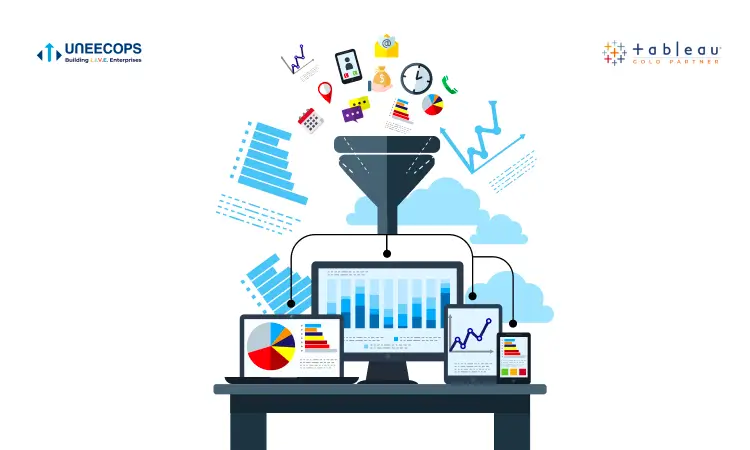With more and more reports and dashboards being deployed, often it becomes a cluttered and tedious task for the developers or the admins to keep a check on where all the data is used in the dashboard, impact analysis for a field change or update, data quality warnings or what data is to be certified. Imagine having a solution that gives us visibility of the checks and much more. When the needs of an organization increase in terms of more dashboard and insight visibility requirements, it’s certain that the data centricity for the dashboards also needs to be managed.
Tableau is one of the most robust BI solutions and data warehouse analytics tools available in today’s era. It is among the best modern data visualization techniques, with embedding analytics and a cloud-based data warehouse.
With data increasing in volume in various formats and the rapid pace of data change, it took a lot of work to keep track of such data and its access to users in complex environments. At the same time, more users required access to the data, and with time more of that data was required in more places, and it took more work for users to find the right data. Ultimately, this caused a lack of governance over the data and a lack of trust among the data users because people questioned whether they were using the right source or if the source was up to date.
In this blog, we will talk about Tableau Catalog, which is a part of data management in the Tableau server / Tableau cloud.
A part of the Tableau data warehouse, Tableau Catalog integrates features like data lineage, impact analysis, data dictionary, data quality warnings, and search into your Tableau applications, helping solve these problems differently from a stand-alone catalog. It focuses on both IT and the end user so that everyone using Tableau Server or Tableau Cloud has more trust in and visibility into the data while enabling more discoverability. Tableau Catalog builds a catalog out of the Tableau content being used by your organization, enabling comprehensive functionality like the following:
- Data lineage
As a workbook author, you can use lineage to trace the fields that your workbook depends on and other Tableau content that depends on columns or fields from tables or data sources you manage. When you need to make changes to your data, you can notify the impacted Tableau authors using an email.
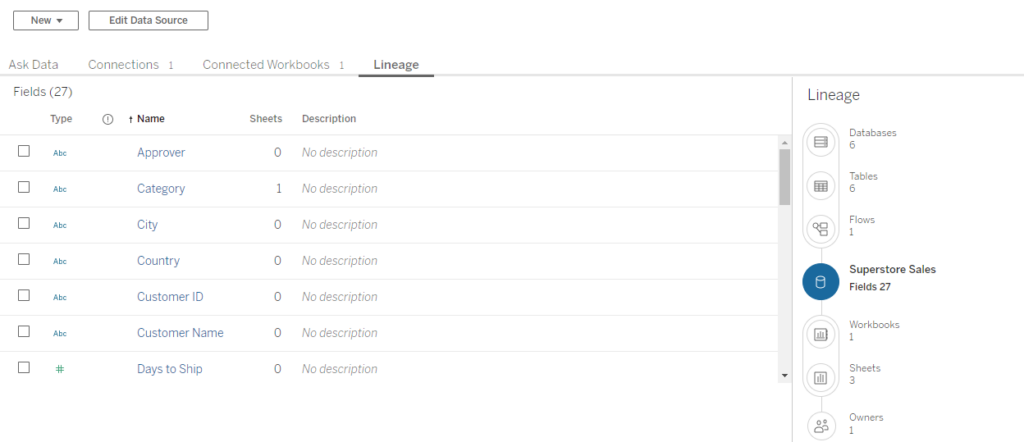
- Quality warnings
Now with Tableau Catalog, you can set a warning message on a data asset so that users of that data are aware of issues.
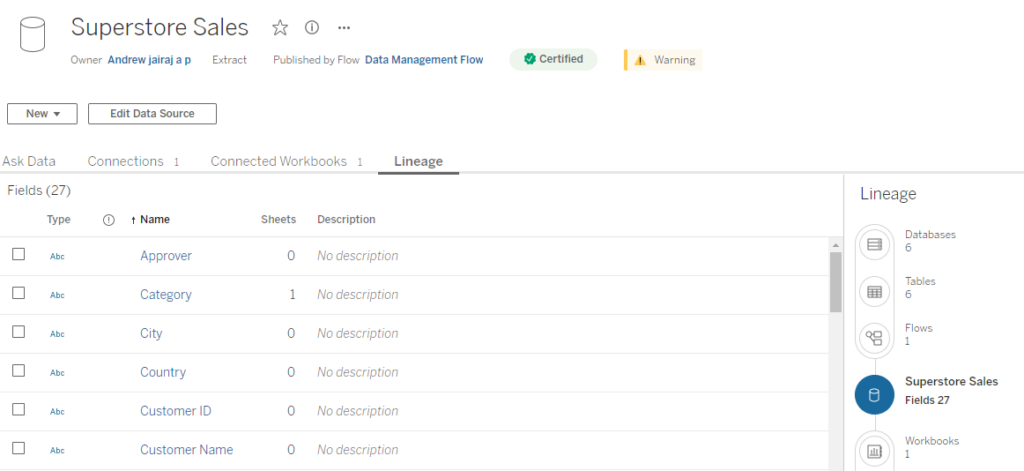
- Flow warnings
When a refresh in a server is successful or failed site admin is alerted via mail when the schedule refresh fails/successful.
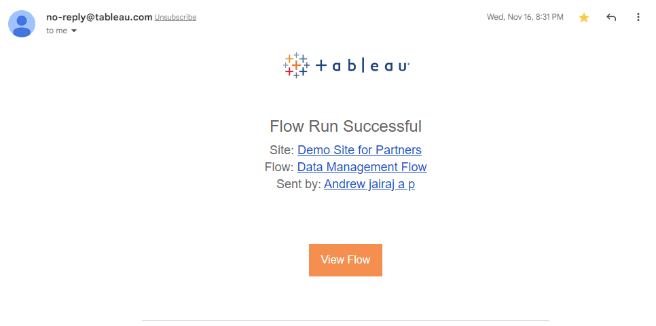
- Certify database and tables
Certifying an asset enables users to see a green badge or green check mark, depending on where the asset is being viewed. This allows users to use data with more trust and visibility.
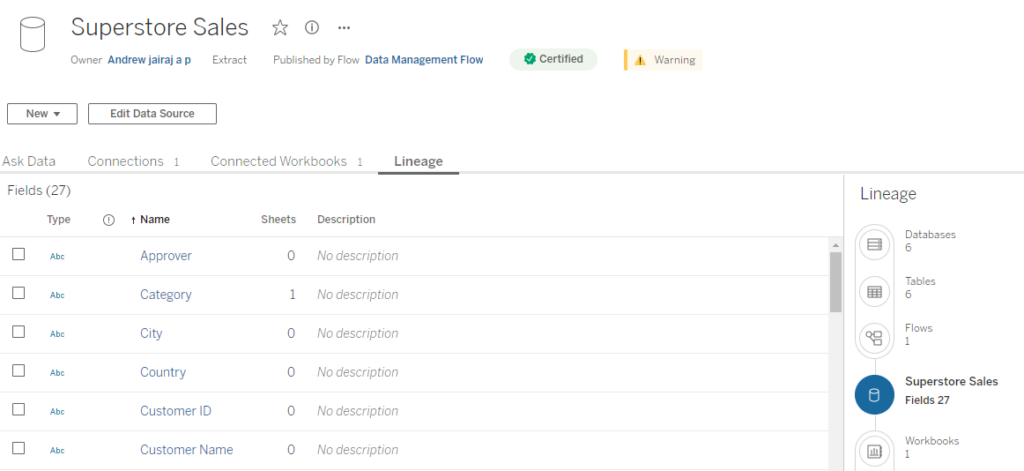
- Expanded search: – When searched on the search bar, extended column-level search is possible.
- Data details: – Using this option, we can get into the calculations used in the dashboard
How Tableau Catalog works
As we explore data warehouse analytics, Tableau Catalog plays a vital role. Tableau Catalog is designed to explore and organize all the content within your site. This includes workbooks, data sources, sheets, virtual connections, and flows, from which metadata is gathered to establish the characteristics of the content. By identifying databases and tables, also known as external assets, Tableau Catalog can determine the relationships between them and the content. This allows Tableau to showcase the lineage of the content as well as external assets. Furthermore, Tableau Catalog facilitates connectivity to external assets through Tableau Server or Tableau Cloud, providing users with a comprehensive view of their data assets. By offering greater visibility, Tableau Catalog enables better data management practices.
This brings us to the end of our blog post. We hope these inputs help you take advantage of building a better decision matrix with Tableau Catalog. Assume modern data visualization techniques with Tableau data warehouse. Embedding analytics, the cloud-based data warehouse empowers business intelligence for companies of all sizes.
For any queries, please feel free to connect with us. We would be more than happy to assist and enlighten together.
Keep Vizzing!




